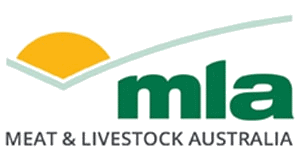Giving canola even more purpose
15 February 2018

While grazing canola to fill the winter feed gap is now entrenched in mixed farming systems, it can also fill the summer-autumn feed gap in temperate high-rainfall zones.
A study assessing the benefits and risks of incorporating spring-sown winter-type canola varieties at Hamilton, Victoria, has revealed a flexible and profitable option for sheep producers to fill the summer-autumn feed gap.
Using dual-purpose to increase production and income
The three-year MLA co-funded research project was conducted by CSIRO, Charles Sturt University and Agriculture Victoria to 'explore novel uses of dual-purpose crops to increase meat production and subsequently increase farm income and lower risk by incorporating dual-purpose crops into systems’.
The project set out to address the overarching question:
"Over the long-term, does extra supply of high quality feed and an extra source of income from grain increase or decrease the reliability of year-round feed supply and business risk?"
Research demonstrating benefits
Sowing winter-type canola varieties during spring in temperate high-rainfall zones exploits the vernalisation requirements of the crop during winter.
The canola remains vegetative and can be grazed as a forage crop with high nutritive value during its first summer and autumn. After vernalisation, the canola sets seed and can be harvested in the second spring-summer.
According to researcher Maggie Raeside of Agriculture Victoria, results demonstrate that it can be used as a summer-autumn forage for grazing ewe lambs before and during joining, while offering a range of benefits over traditional forage options.
With sufficient rainfall, canola can produce 2–4 tonnes dry matter (DM)/ha by the first grazing (about 8–10 weeks after sowing). It will respond well to summer and autumn rainfall events and can regrow after grazing to allow multiple grazings. Canola has a high digestibility and low neutral detergent fibre content, providing approximately 12 megajoules/kg DM and 14% crude protein.
"Grazing spring-sown canola during summer and autumn will not affect canola yield at harvest, provided grazing ceases before the plants start producing flower buds," Maggie said.
Boosting whole-farm profit
Economic modelling has shown that joining ewe lambs to lamb at one-year-old improves farm profits over conventional two-year-old ewe joining.
“The use of spring-sown canola as a key feed source to achieve target joining weights reduces risk and supports whole-farm profits, compared with forage-only enterprises,” Maggie said.
“Our research measured ewe lamb growth rates in the range of 100–240g/day, once the sheep adapted to grazing the forage crop, which is equal to or better than traditional options, such as Winfred forage brassica, lucerne, perennial ryegrass and chicory.”
Animal health impacts
There appear to be no negative effects of grazing canola on ewe reproductive performance before and during joining, according to the research.
However, as with any change in diet, producers are encouraged to introduce stock slowly to the forage crops and allow them to adapt to the new feed source by allowing access to familiar feed sources, such as hay or dry pasture.
“Adaptation may take two to three weeks, after which consumption and growth rates will increase,” Maggie said.
“Once adapted, animals can consume the crop as the sole diet.
“It is always advisable to administer a booster vaccination against pulpy kidney at least three months before grazing brassica, chicory or lucerne crops.”
Maximising the benefits
Canola seed is significantly more expensive than typical forage brassica varieties, so it is important that producers consider harvest of the canola as an integral part of the process, rather than an added benefit.
However, Maggie also encouraged producers to weigh up the opportunity costs of forgone grazing during the period the canola needs to be excluded from grazing while it is flowering and pod filling – usually July–December.
“Like all crops, canola should be considered as part of a cropping enterprise’s rotation and part of a pasture improvement program for livestock,” Maggie said.
More information
This project has developed producer guidelines: Grazing spring sown canola for lamb and canola production. For a copy, contact:
Maggie Raeside
Agriculture Victoria
T: 03 5573 0709
E: margaret.raeside@ecodev.vic.gov.au


